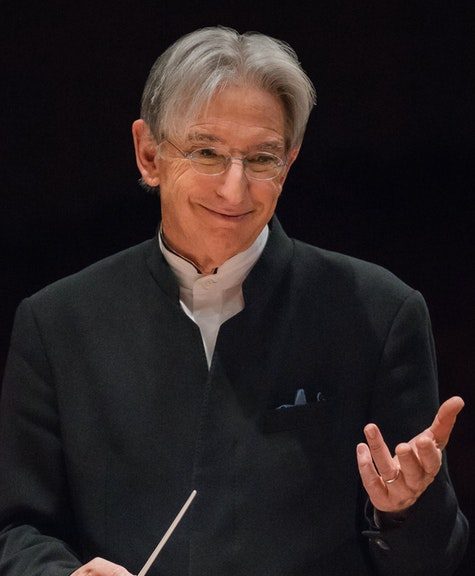
SNATCHING VICTORY FROM JAWS OF DELETION
You were sure that you hit the wrong concert on the wrong night, unless you caught the fine-print program insert. Neither the conductor nor the opening symphonic work matched the earlier billing, which had featured the recuperating Michael Tilson Thomas on the podium of the S.F. Symphony.
But MTT, still curtailing commitments, had given way to emergency fill-in Ludovic Morlot, most recently music director of the Seattle Symphony. And as you learned in the late-hour fine-print, the French-born Morlot had subbed Ravel’s “Mother Goose” Suite, a fanciful children’s tale thematically compatible with the work to follow.
Morot stayed on to lead the commissioned world premiere of Timothy Higgins’ Trombone Concerto, with Higgins himself as soloist. In music, the remarkable Higgins is akin to triple-threat stars in sports, as he is a composer as well as principal trombonist in the orchestra (He’s also a veteran arranger). His was a beautifully craft concerto in traditional harmonies and textbook structure inspired by Higgins’ emotional reactions to his/their impending baby. That welter of emotions led to a full-throated, full-orchestra exuberance. Writing sophisticated orchestrations at times with glints of Richard Strauss’ style, Higgins could easily pass for a fulltime composer.
A second of his motivations was to show off the variety of sounds and textures in his instrument—in the range, in the expressiveness, in its agility. The agility of the instrument in fast runs was ingratiating. Yet more memorable was its descending into intimate moments, with softness and legato in the night music of the middle movement. There he not only fashions a lovely trio of oboe (Eugene Izotov), clarinet (Carey Bell) and trombone, but also drops down into the lower bass-note register. If the orchestra at times seem to yearn for the big-score movie music of the 1930s, no worry—it roars ahead in the finale with ebullient and almost explosive force as the soloist turns virtuoso, with the great lip control needed for the breath-taking tempos.
Soloist Higgins brought this off exuberantly and somehow managed to maintain excellent pitch throughout with that infinity of slide positions integral to his brass device which, more than most instruments, often seems to resist maintaining pitch. Frankly, I hope that after this, he gets some well-deserved rest. If there was a co-hero here, it was Morot, tackling an unfamiliar score in record short order.
With measured steps MTT returned to the podium to lead that quintessential Americana opus by Aaron Copland, “Appalachian Spring.” The 36-minute neoclassical work quoted the old Shaker tune “Simple Gifts.” The score was originally entitled “For Martha,” intended for the nonpareil modern dancer Martha Graham and her company. Graham changed the title, quoting a poetic line of Hart Crane about a watery spring. This evolved into quite another type of springtime in its references.
MTT knows and works the piece well, this time stretching out slow passages enticingly. He never skimped on the sharp accents and dissonances, and he got alluring performances from the orchestra, even with piccolo player Catherine Payne moved up to the flute first chair playing memorable solos, for which she was accorded a bow at the end. In the end, the SF Symphony had averted the night’s potential disasters.
MUSIC NOTES—Higgins incorporated in his concerto a personal lullaby he sang to the babe even prior to birth, imbedded so deeply into the opus that few could discern the where and which…..The SFS played Copland’s expanded full-orchestra version of “Appalachian Spring,” far richer than the ensemble used for the dancers’ world premiere of the work.
SAN FRANCISCO SYMPHONY with co-conductors MTT and Ludovic Morlot, and Higgins’ Trombone Concerto premiere, Nov. 18-20 at Davies Hall, S.F. For info: (415) 864-6000, or go online: www.sfsymphony.org.